Crate Expectations
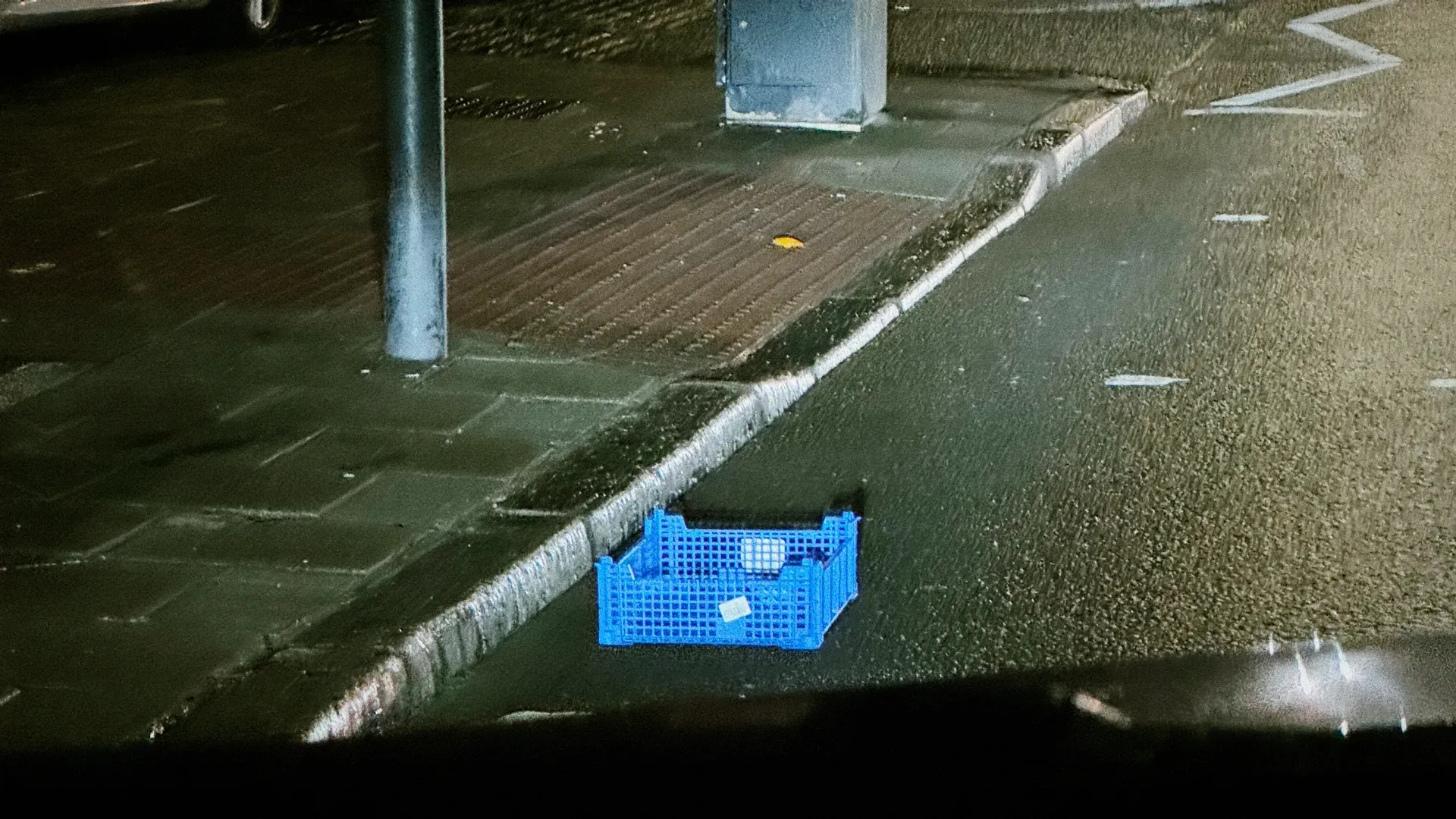
I’ve been obsessed with a particular plastic crate for the past months. I nicknamed it the “Polish Mushroom Crate”. Its bright, cheerful blue is distinctive. You’ve probably seen it before — stacked in supermarkets, abandoned on curbsides, or buried in piles of discarded packaging. I’ve interrupted many conversations to get a photograph of them. Why? Good objects are like Lego: immediately understandable and reusable. This is what this crate is all about.
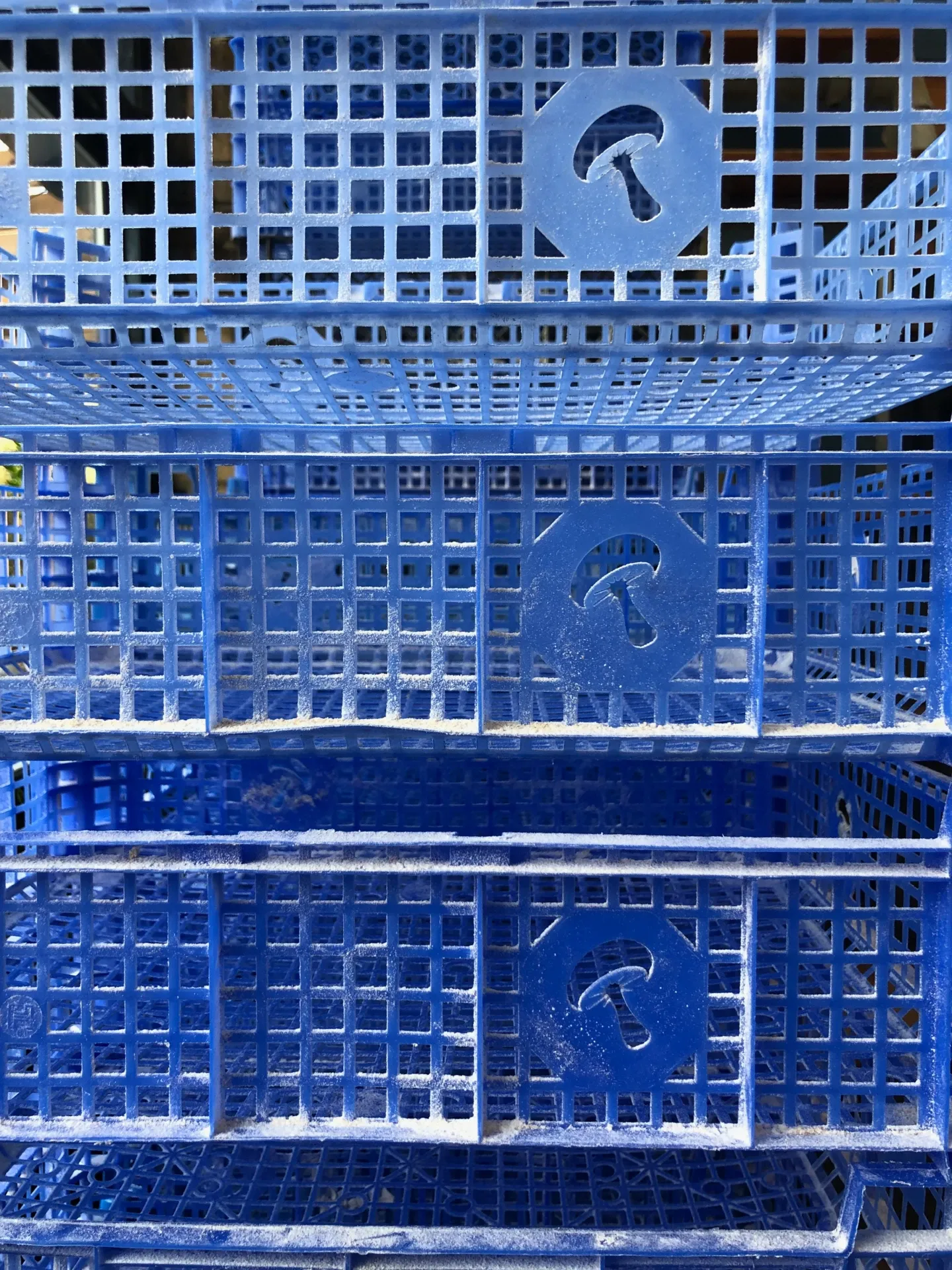
Where do they come from? The crate manufacturer is a Dutch company called Hollarts. “For mushroom cultivation, you need a sturdy and at the same time lightweight crate. This has been developed together with the sector and is available as a standard product from our stock.” says their product page1. What are they made of? Their website explains it: “Polypropylene is recyclable. It can be separated from other plastic types, melted into a liquid, cooled, and turned into pellets, then used to form new plastics. However, Polypropylene loses its strength and flexibility as it goes through the recycling process.” A half-good news: these crates can be recycled into other products but are not made of recycled plastic.
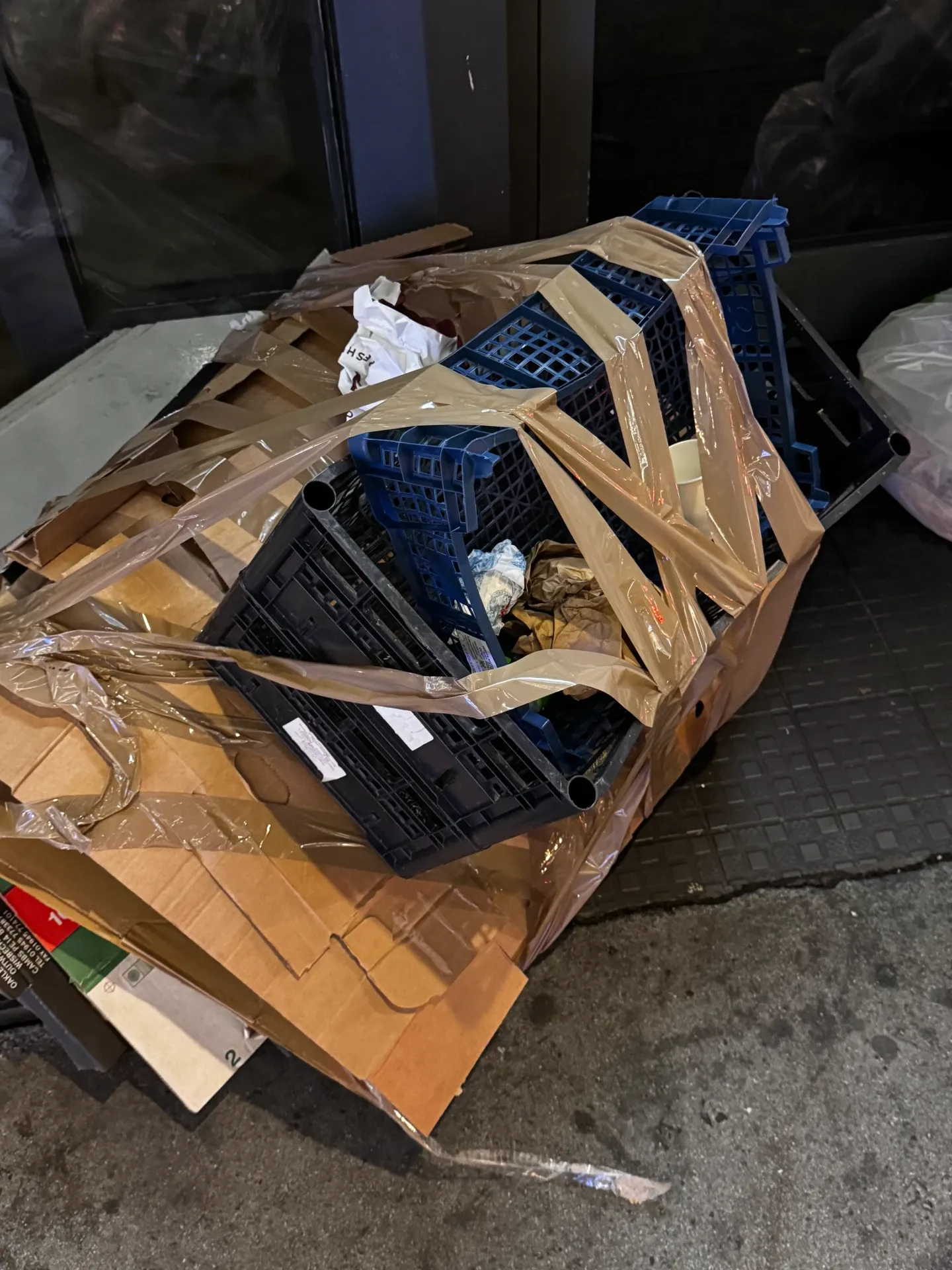
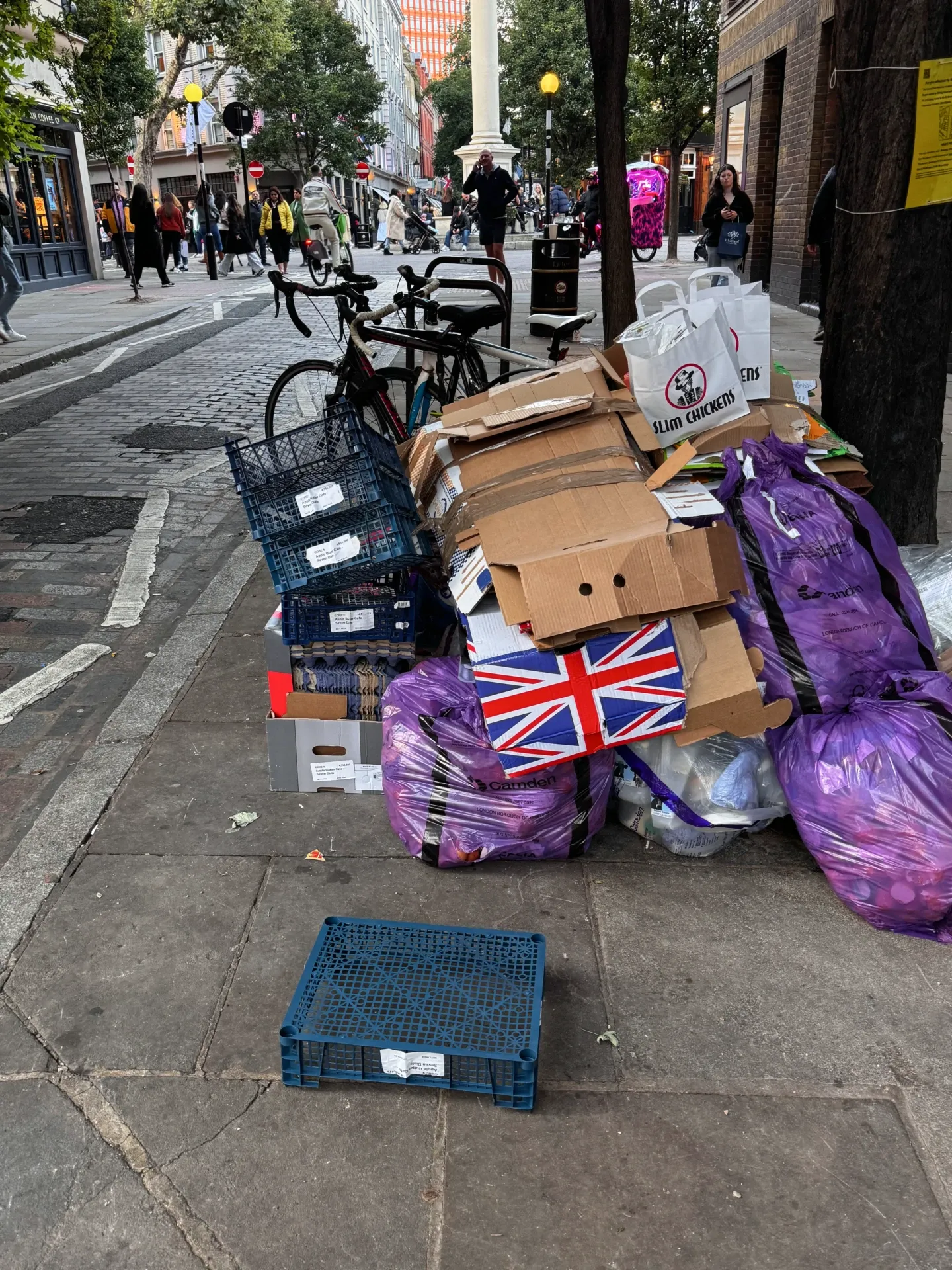
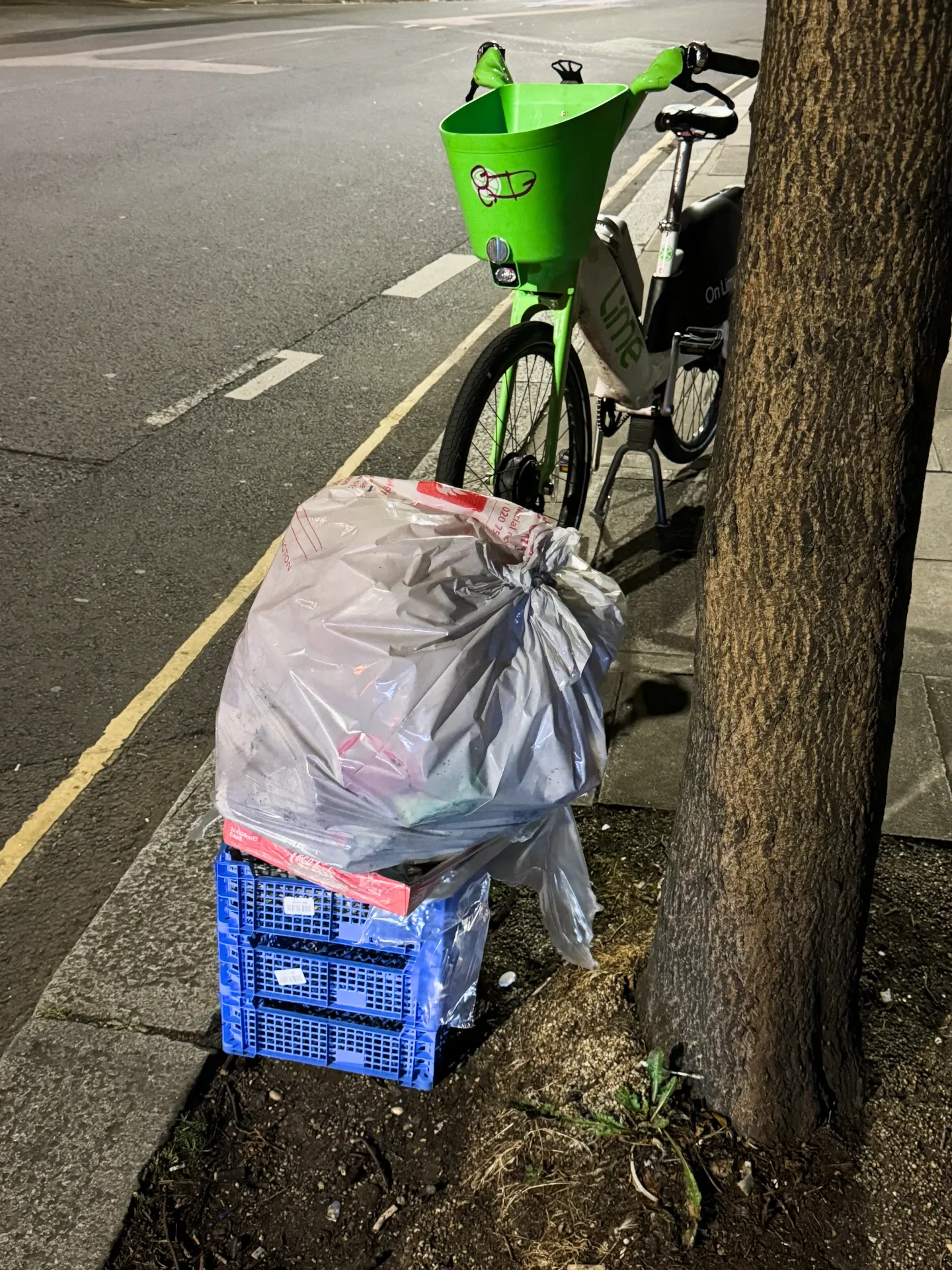
These crates fulfil perfectly the purpose of packaging, storage and delivery of mushrooms. But once empty, they lose their value. They become waste and fall into a liminal space where objects have no value. The Leather Lane market in London sells lunches to hungry workers. At the end of the day, when they clear out the market, heaps of rubbish accumulate, and unwanted produce, polystyrene boxes, cardboard boxes, and my favourite Polish Mushroom Crate are left there for rubbish collection. Do they get recycled by the council? I suppose so. Other people have seen the value of these crates. E5 bakery in London uses them to proof dough before turning it into loaves. Again, I found the crates inside cafes and restaurants that serve the mushrooms on their menu. They use the crates to store bits and pieces like menus and cutlery. It’s such a good idea. I use them at home to store spices and jars. I’ve seen people using them to hold their plant pots or organise their CDs and DVDs. There is even a secondhand market. Yes, those crates are sold on eBay by the dozen. Cool, those crates are being reused as crates, but what happens when they are not? Companies like Vanden will buy Polypropylene scrap, but you need to accumulate five metric tonnes or half a truck (I will not try to make pocket money out of it).
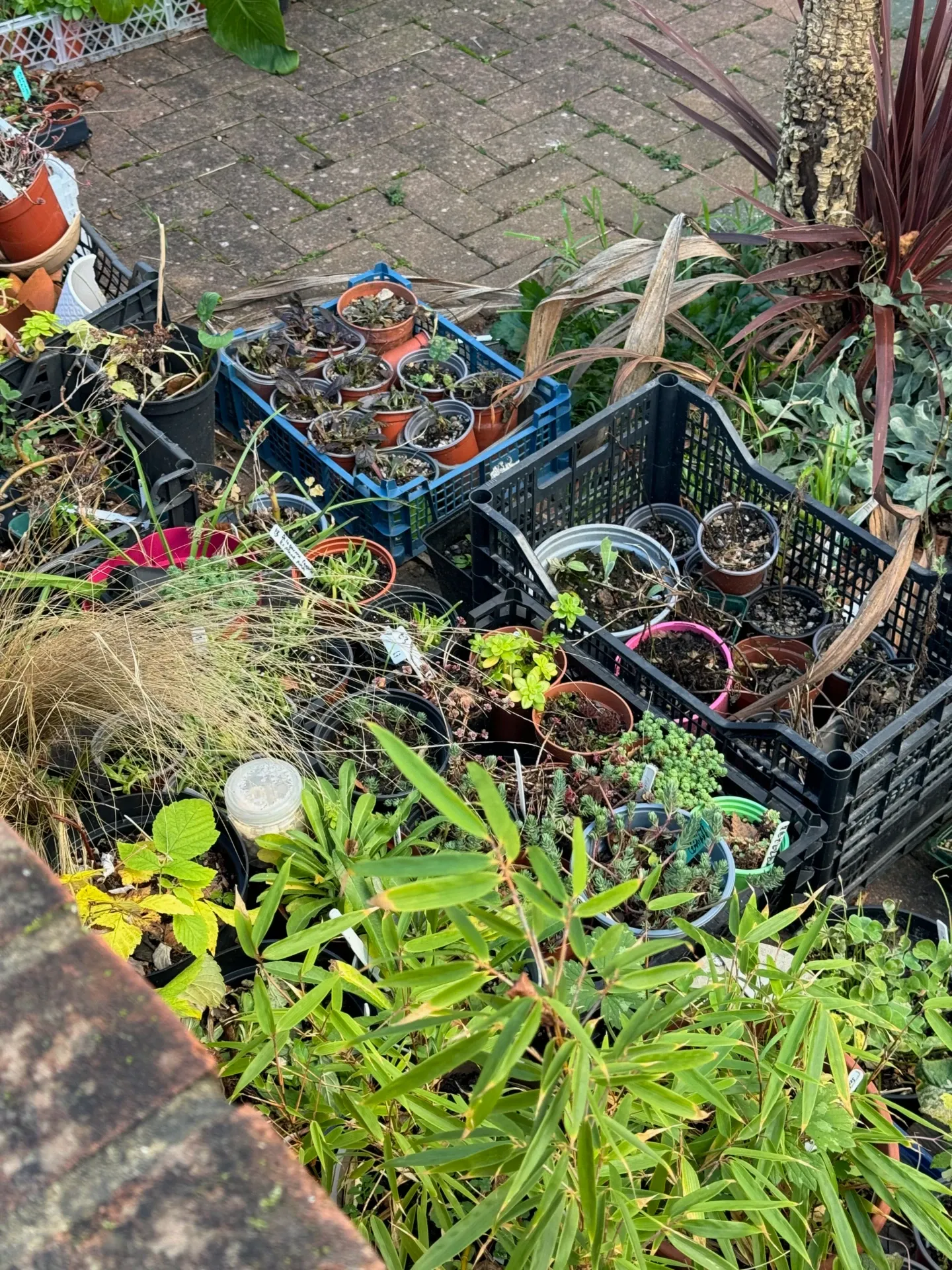
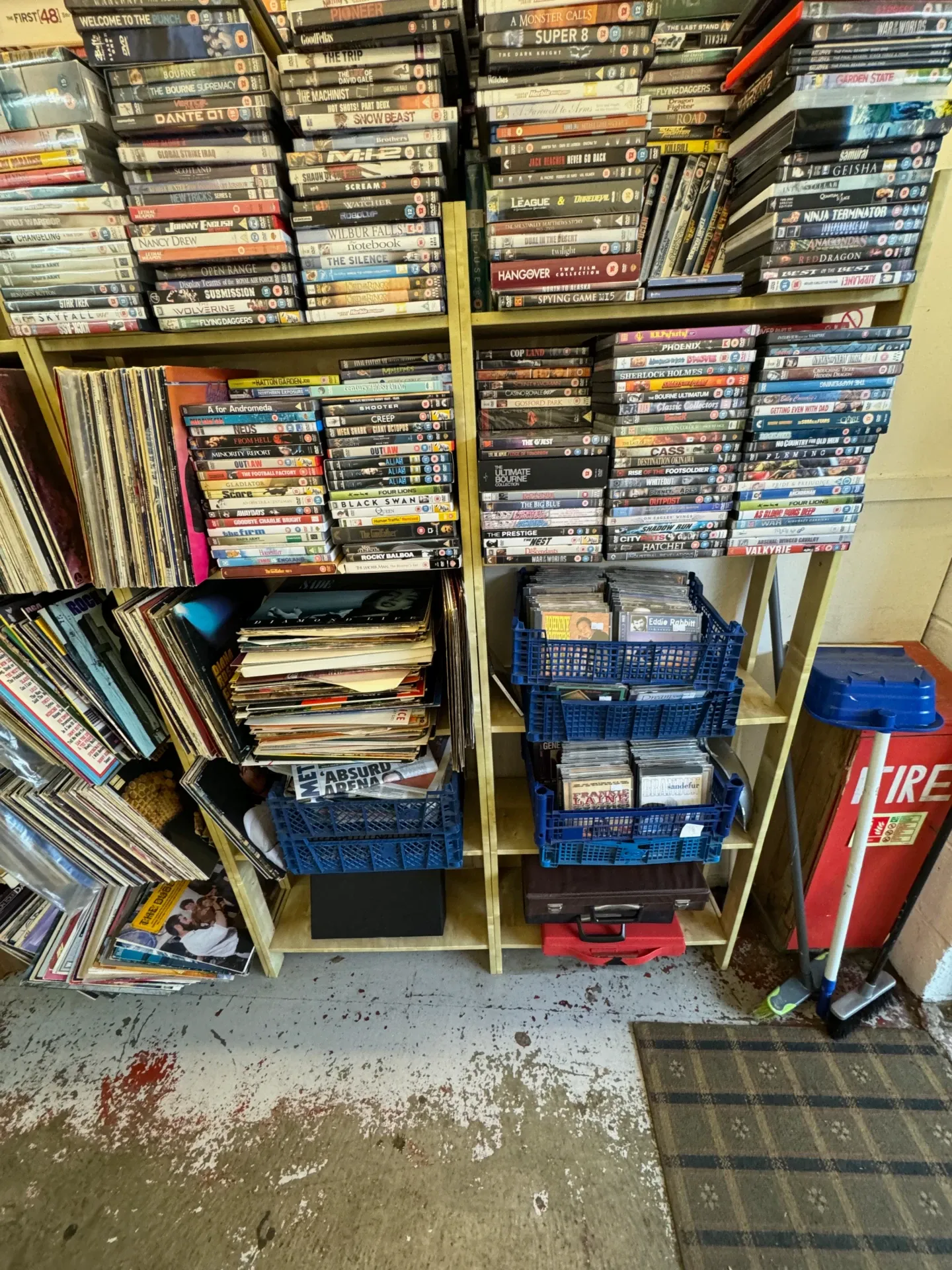
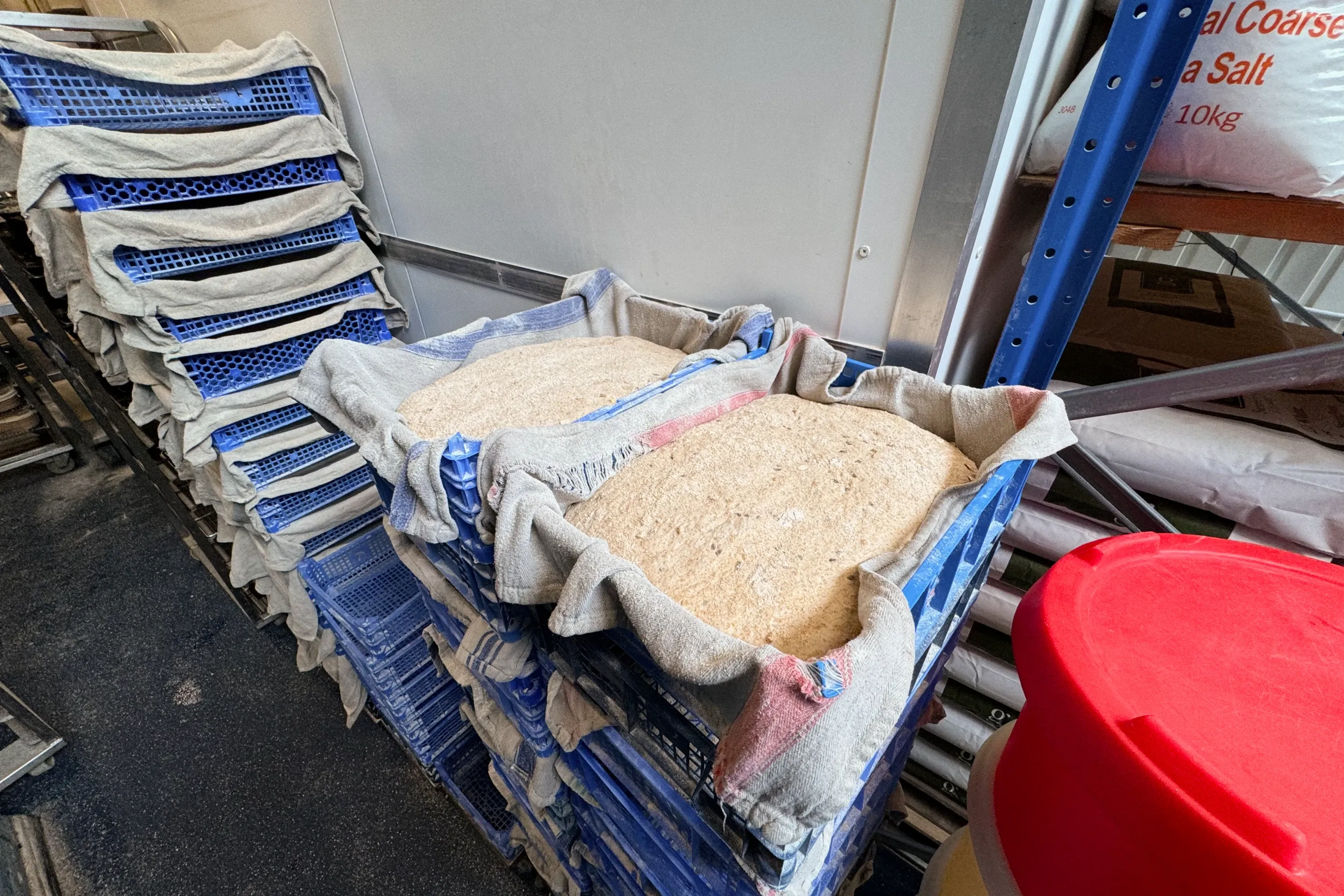
Is there something better to store mushrooms? The manufacturer claims that their solution is superior because it was designed specifically for the mushroom industry, and the crates are sturdy and light, which cuts costs in transportation and storage. “Mushrooms should be packed in trays or cartons with a perforated polyethylene film over-wrap to reduce moisture loss. It is important to avoid water condensation inside packages. There are no chemical treatments to extend storage-life of mushrooms intended for fresh consumption.” says the Cargo Handbook2. Wouldn’t making a fresh mushroom crate with mushroom packaging be interesting? The company Ecovative developed the MycoComposite technology to grow various forms of packaging with mushrooms and hemp.
After we design and manufacture them, objects take on their own lives. Sometimes, the best tool is the one that is right there in front of you. This crate is sometimes the best tool. Was it designed for that? No. This crate perfectly fits its solution space; it’s designed with one industry and application in mind. That being said, its design finds broader applications. It’s almost the antithesis of a jack-of-all-trades master of none. There is this aphorism that says that to be universal, you have to be specific. James Joyce said, “For myself, I always write about Dublin, because if I can get to the heart of Dublin I can get to the heart of all the cities of the world. In the particular is contained the universal.” Greta Gerwig, the film director of Barbie and Frances Ha, echoes this in an interview3: “The more particular you make something, the more universal it becomes”. The design of this crate is a testament to this aphorism. It reminds me not to be afraid to design things very specific to a job to be done and to do one thing well instead of focusing on crowd-pleasing features. Great for one thing, good for many things.
